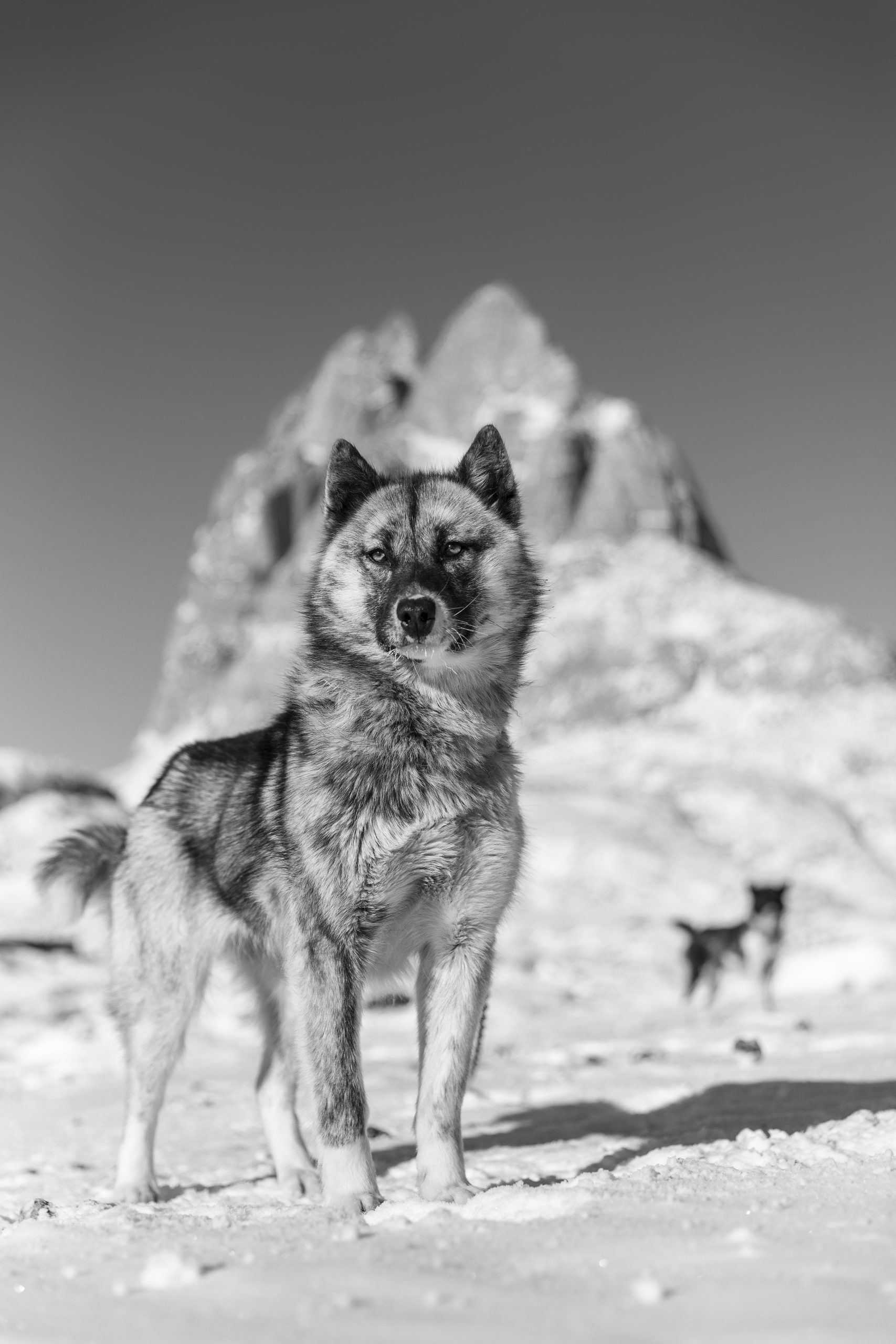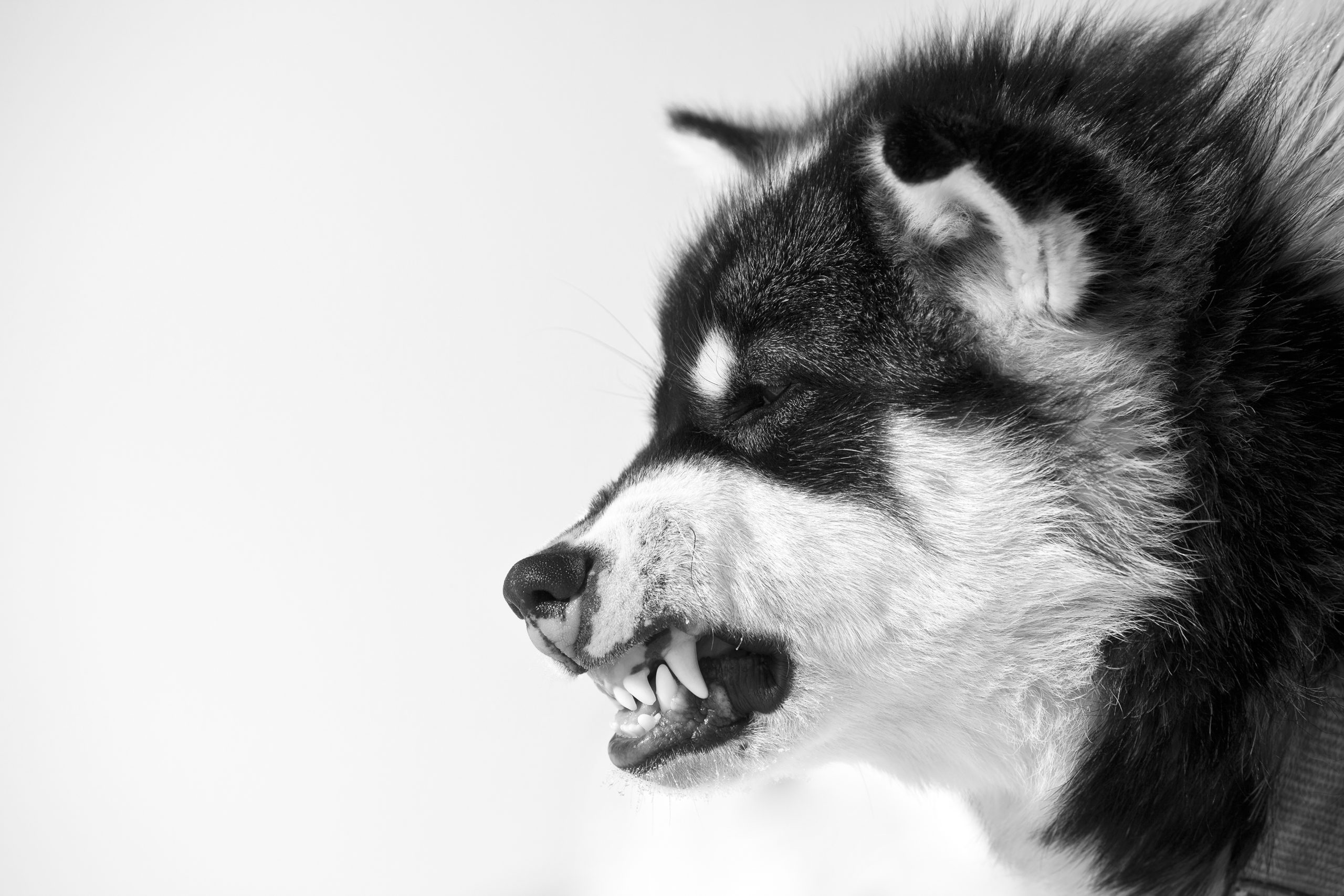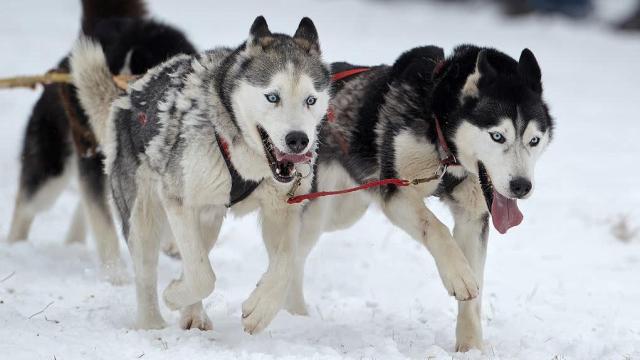Scientists have traced the ancestry of modern sled dogs, such as Siberian huskies and Alaskan malamutes, all the way back to the end of the last ice age, highlighting an extraordinarily long period of genetic continuity.
“Although sled dogs are one of the most specialised groups of dogs, their origin and evolution has received much less attention than many other dog groups,” declares the opening sentence of a fascinating new research paper published today in Science.
Indeed, we know surprisingly little about the ancestry of modern sled dogs, a select group of domesticated canids that includes Siberian huskies, Alaskan malamutes, and the Greenland sled dog, the latter of which is an Inuit breed used for hunting and sledding. Mikkel-Holder Sinding, a paleogeneticist at the University of Copenhagen and the first author of the new study, along with scientists from many other institutions, embarked upon a genetic investigation to learn more about these working Arctic breeds, including where and when they first emerged.

Domesticated dogs appeared at some point between 15,000 and 40,000 years ago, having diverged from an extinct wolf species. Appearing during the Pleistocene, dogs were the first animals to be domesticated by humans, predating other domesticated species, such as farm animals, by thousands of years. Dogs and humans have a shared history that goes far back into time, highlighting the importance of this symbiotic relationship.
For Pleistocene humans living at the tail-end of the last ice age (a period formally known as the Pleistocene–Holocene transition), this relationship was particularly vital, leading to the emergence of sled dogs. As the new research shows, modern sled dogs have genetic roots that can be traced back to prehistoric Siberia, and they represent a distinct lineage that appeared some 9,500 years ago.
That sled dogs were around so long ago is not a huge surprise, given the existing archaeological evidence. Artifacts from late Upper Paleolithic Siberia include carved bones, antler, and ivory used for securing dog harness straps to sleds, in a manner reminiscent of how modern Inuit do it today. On Zhokhov Island in eastern Siberia, archaeologists uncovered sled technologies and the remains of ancient sled dogs dating back to the same period. By integrating sled tech with hardy, resilient working dogs, ice age Siberians stumbled upon an effective survival strategy, and long-distance travel and transportation became possible across the harsh and desolate Arctic terrain.
For the new study, the scientists sequenced the genomes from 10 modern Greenland sled dogs, the remains of a 9,500-year-old sled dog found on Zhokhov island (this specimen, dubbed “Zhokhov,” was found buried alongside sled equipment), and a 33,000-year-old wolf mandible, dubbed “Yana.” These genomes were then compared to the DNA of 114 modern dogs representing a host of geographically and genetically diverse breeds. This allowed the researchers to create a kind of family tree for the dogs.
Yana, unsurprisingly, was most certainly a wolf. Zhokhov, on the other hand, was found to be related to modern dogs, with DNA closely related to huskies, malamutes, and most especially Greenland sled dogs. The new research shows that ancient Siberian dogs are the common ancestor to all modern sled breeds. That Zhokhov is so closely related to Greenland sled dogs makes a lot of sense, considering how isolated they’ve been over the millennia.
The new research tells us that “Arctic people and Arctic dogs go back over 9,500 years together and that the tradition of sledding, still around today, uses the same group of dogs,” Sinding told Gizmodo..

A major finding of the paper is the realisation that this genetic continuity has not ended and that “modern sled dogs have most of their ancestry in common with the 9,500-year-old sled dog,” he said
The researchers detected some gene flow from Siberian Pleistocene wolves but no significant genetic mixing with modern or ancient American-Arctic wolves. This was a surprising result, given evidence for post-domestication interbreeding between other wolves and dog breeds, and ethnographic evidence from Greenland indicating that dog-wolf matings “were not uncommon,” according to the paper. If this is the case, “then the lack of gene flow from modern American-Arctic wolves into sled dogs implies selection against hybrids,” meaning humans actively prevented their dogs from mating with wolves, which actually makes a lot of sense (why undo generations of careful and meticulous breeding work?). That said, Sinding suspects some mixing took place, but it wasn’t something his team was able to detect. It’s an avenue he’d like to explore more in the future.
Daniel Bradley, a geneticist and microbiologist from Trinity College Dublin who wasn’t involved in the research, said the authors gave a “thorough and well-presented analysis.”
“The result that catches my eye is the continuity of modern sled dogs with the sample of a dog from a context implying sledding culture 9,500 years ago,” Bradley told Gizmodo. “We already suspected that dogs were the earliest domesticate. This finding implies one particular partnership of humans and dogs — their use for traction in Arctic regions — as an unbroken thread stretching back into the early Holocene.”
For owners of huskies and malamutes, myself included (I used to have husky named Kiksa), this research will undoubtedly be interesting but perhaps unsurprising. These dogs are fiercely independent and stubborn, and instead of barking, they howl. What’s more, unlike most other breeds, they actually resemble the species they’re descended from: wolves. So the next time you cross paths with a husky or malamute, remember that you’re looking 10,000 years back into time.
